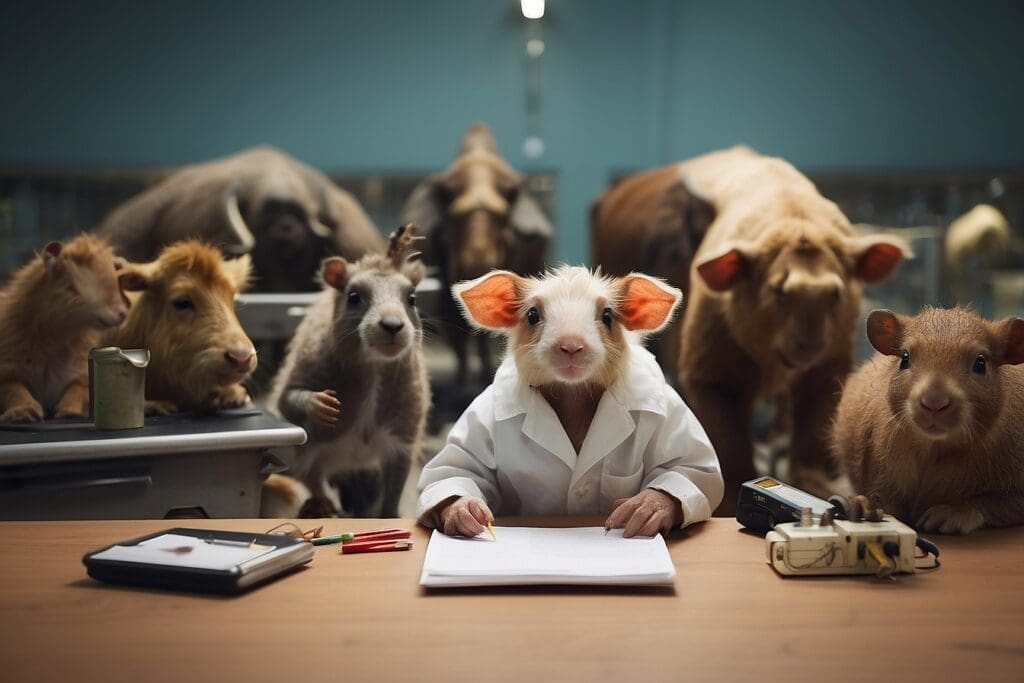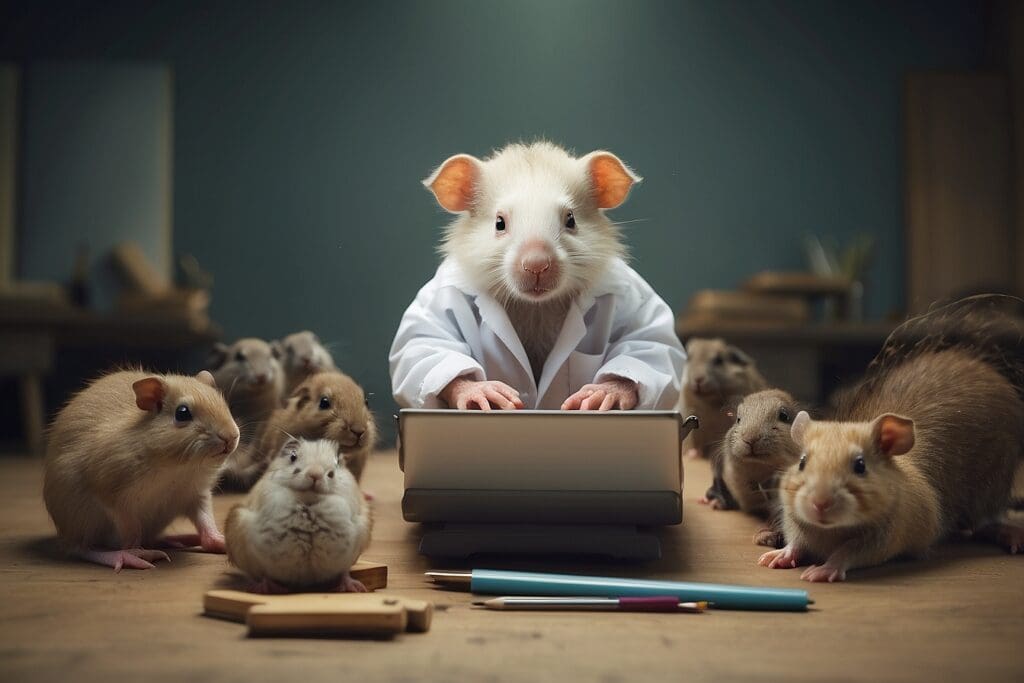This decade has brought a number of environmental issues to the forefront of public consciousness, words like global warming, carbon footprint, and deforestation have become part of our everyday vocabulary. As these environmental issues have become more prominent, so have others receded, with mantras of “save the rainforest” and “save the whales” being left behind in the 1990s. Animal testing is another issue that, while still contentious, does not form as large a part of public discourse as it once did. While the argument against it is not particularly loud these days, animal research continues to play a large part in both the medical and cosmetics industries. There are multiple perspectives surrounding this difficult issue, as discussed in this article.
The Pro-Animal Testing Argument:
The purpose of animal testing is to determine the “safety and efficacy”1 of a product or procedure before it is used by or conducted on humans. While cosmetics can often be accurately tested on non-living things, medical procedures often cannot, as treatments must be evaluated in terms of their overall effect on a “whole living system”2 rather than an isolated organ. Today, and into the foreseeable future, animals are the only option for doing that. In the words of Frankie Trull, president of the Foundation for Biomedical Research: “[animals] are not a perfect mimic of a human, but they’re as close as we’re going to get without using a human.”3
The majority of animal testing is performed on invertebrates, not invertebrates. While videos of immobilized, caged monkeys and sad Dobermans squealing in pain proliferate on the internet, the tests they depict are not widespread: “cats, dogs, and non-human primates”4 represent less than one percent of animal research. Instead, it is usually fruit flies and nematode worms that scientists test, which they are free to do without government regulation. These invertebrates are used because they have short life spans, can be housed in large numbers, and are cost effective. Their simple, easy to understand anatomy provides scientists with another advantage. Because Cephalopods are the only invertebrates protected under United States law, the total number of invertebrates tested each year is unknown.
According to the U.S. Department of Agriculture, excluding invertebrates, 1,177,566 animals were used in tests in the US in 2005.5 This figure also excludes rats and mice, which researchers are not required to register but which represent “95% of all animals used in research.”6 The animal used in a test depends on what a scientist is studying. For example, neurological compounds are often tested in cats, because cats have a neurological system that “closely mimics that of a human.”7 Dogs and pigs are used for cardiovascular studies, with Beagles being the preferred species of dog because of their mild disposition. Albino rabbits are commonly used in eye irritancy tests by cosmetics companies because they lack a tear duct, which allows for a rapid progression of observable symptoms.
The importance of animal testing for medical purposes is highlighted by the fact that a full “60% of potential drugs [are] rejected at the animal testing stage.”8 The fact is that animal testing is essential to modern day medical research, and is responsible for many of modern history’s breakthroughs: blood transfusions, insulin, the polio vaccine, heart transplants, and deep brain stimulation for Parkinson’s disease to name a few. All these discoveries owe at least part of their existence to research performed using animals.
The Argument Against Animal Testing:

In comparison to animal testing for medical research, animal testing by cosmetics companies seems at best superfluous and at worst downright cruel. The most commonly animal-tested products are eye shadows and soaps.9 These products are evaluated using a number of different tests, the names of which include: skin sensitization, skin irritancy, carcinogenicity, and reproductive toxicity.10 Lethal dosage tests are used to determine the lowest amount of a substance that can kill a group of animals. The most infamous is the LD50 test, which forces subjects to ingest a substance until half of them die.11
The reason that something as inhumane as testing on invertebrates continues to this day is that computer and mathematical models, no matter how advanced, are not as accurate predictors of a chemical’s effect as living animals are. Still, there are alternative ways for companies to test the impact of their chemicals on customers. “Cell and skin tissue cultures [and] corneas from eye banks” are two ways to explore the most common effects of cosmetics- inflammation of the eyes and skin—without using animals.
The European Union banned animal testing of cosmetics in 2009, but the U.S. has yet to follow its lead, leaving decisions about animal testing to the manufacturer’s discretion. Logos seeming to represent a commitment against animal testing can be found on nearly every cosmetics product, but only one, the Leaping Bunny, can be trusted. Consumers should look for the Leaping Bunny, a logo created by the Coalition for Consumer Information on Cosmetics. Recognized worldwide, this logo represents a “cruelty-free standard.”12
The Future: As far as cosmetics go, it is basic supply and demand, and the dollar is much more powerful than PETA. Once people stop buying products tested on animals, animal testing of cosmetics will cease to exist. Animal testing for medical research is another matter entirely, and unfortunately, there will not be an end to it unless humans are prepared to relinquish the medical advances that have made recent generations the longest living in history. Testing the effects of cosmetic products on vulnerable animals seems inhumane, but then again, so does PETA President Ingrid Newkirk’s infamous statement that “even if animal research resulted in a cure for AIDS, we’d be against it.”13





